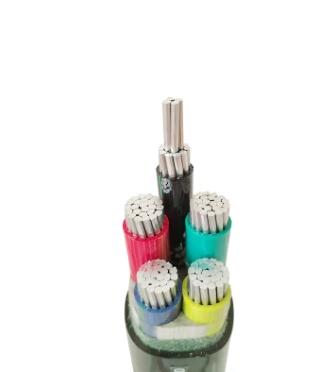What is the purpose of insulation in electric wires
2023-11-01
The primary purpose of insulation in electric wires is to provide electrical safety and protect against electrical hazards. Insulation serves several critical functions in electrical wiring:
1. Prevention of Electrical Shocks: Insulation helps to prevent direct contact between the electric conductor (e.g., copper or aluminum wire) and other conductive materials or individuals. Without insulation, there would be a risk of electrical shock when coming into contact with live wires.
2. Electrical Isolation: Insulation isolates and separates conductors within a cable or wire, preventing unintended contact between them. This separation is crucial to avoid short circuits and interference between different conductors.
3. Protection Against Short Circuits: Insulation acts as a barrier that prevents the conductor from coming into contact with materials that could cause a short circuit or electrical fault. Short circuits can lead to overheating, fires, and damage to electrical equipment.
4. Corrosion Resistance: Some insulation materials, such as PVC (polyvinyl chloride) and other synthetic materials, are resistant to moisture and environmental factors. This resistance helps protect the conductor from corrosion, especially in outdoor or wet environments.
5. Dielectric Strength: Insulation materials are chosen for their dielectric strength, which is their ability to withstand high voltage without breaking down. This is crucial for preventing electrical breakdown and maintaining the integrity of the insulation.
6. Thermal Insulation: Insulation can also provide thermal resistance, helping to keep the wire's temperature stable and within acceptable limits. This is particularly important for wires carrying high currents.
7. Environmental Protection: Insulation shields the wire from environmental factors such as moisture, dust, chemicals, and abrasion. It extends the lifespan of the wire and ensures its reliability in various conditions.
8. Prevention of Electromagnetic Interference (EMI): Certain types of insulation, like coaxial cable or shielded cable, can help reduce electromagnetic interference, which is critical in applications like data transmission and telecommunications.
9. Identification and Safety: Insulation is often color-coded to identify the purpose of the wire or cable and adhere to industry standards. This color-coding simplifies installation, maintenance, and troubleshooting processes.
The specific type of insulation used in electric wires can vary depending on the application, environmental conditions, and safety requirements. Common insulation materials include PVC, XLPE (cross-linked polyethylene), rubber, Teflon (PTFE), and various other synthetic compounds, each with its own set of properties and applications. The selection of the appropriate insulation material is a critical factor in designing safe and reliable electrical systems.



